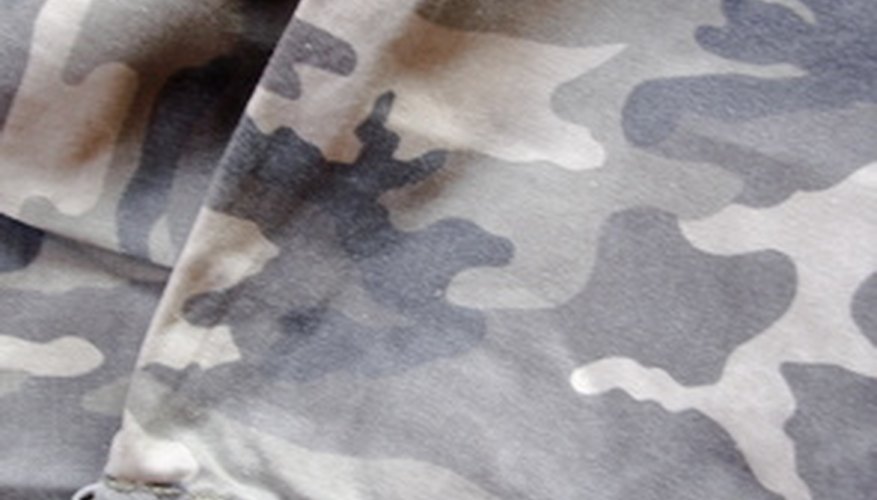Camouflage is a type of clothing characterised by a randomised pattern of greys, greens and browns commonly found in nature, designed to hide the wearer in a natural setting. Camouflage clothing was originally developed for use by the military, but it is also a common sight on outdoor sports enthusiasts, such as hunters, fishers and paintball players. Night camouflage uses the same randomised pattern of natural colours, in darker shades, to disguise the wearer in a dim environment.
Typical Night Camouflage Colors
In general, night camouflage uses similar colours to regular camouflage, with respect to the presumed nighttime environment of the wearer. Brown yellow khaki, green brown, olive drab, neutral grey, beige, red brown, dark chestnut, charcoal, dark slate grey and fern green are all common camouflage colours that are found on night camouflage in darker shades. The military also developed desert night time camouflage, which features a grid pattern of khaki and beige and was designed to hide the wearer from enemy night vision devices. This design and colour pattern has since been designated obsolete because of the advances in night vision technology and poor field testing.
- In general, night camouflage uses similar colours to regular camouflage, with respect to the presumed nighttime environment of the wearer.
- The military also developed desert night time camouflage, which features a grid pattern of khaki and beige and was designed to hide the wearer from enemy night vision devices.
Environmental Considerations
The environment where you intend to wear your night camouflage is another factor determining what colours of night camouflage you should look for. The majority of camouflage is designed for a forest environment, which comes in handy for hunters or paintball enthusiasts who generally find themselves in such a location. The colours typically used in "Green Temperate" camouflage are green, beige, brown and dark grey. There is also winter camouflage, which incorporates white and grey into the design, and desert camouflage which is more beige and khaki based. Urban camouflage is a slightly more complex area of colouration, and is relatively new to the camouflage world. It generally utilises a grey palette, which would be made darker for a nighttime environment.
- The environment where you intend to wear your night camouflage is another factor determining what colours of night camouflage you should look for.
- The majority of camouflage is designed for a forest environment, which comes in handy for hunters or paintball enthusiasts who generally find themselves in such a location.
Why Not Solid Black?
Wearing a solid colour at night actually makes you more visible, as it defines your silhouette against a non-solid colour background. The average nighttime environment isn't actually solid black, but rather a combination of various dark shades. Another aspect to take into consideration is how solid black shows up in a near infrared camera, which is often used at night in military operations, as well as by hunters and at paintball games. Solid black appears as bright white in a near infrared camera, making the wearer stick out more than if they were wearing duller shades.
- Wearing a solid colour at night actually makes you more visible, as it defines your silhouette against a non-solid colour background.
- Another aspect to take into consideration is how solid black shows up in a near infrared camera, which is often used at night in military operations, as well as by hunters and at paintball games.
